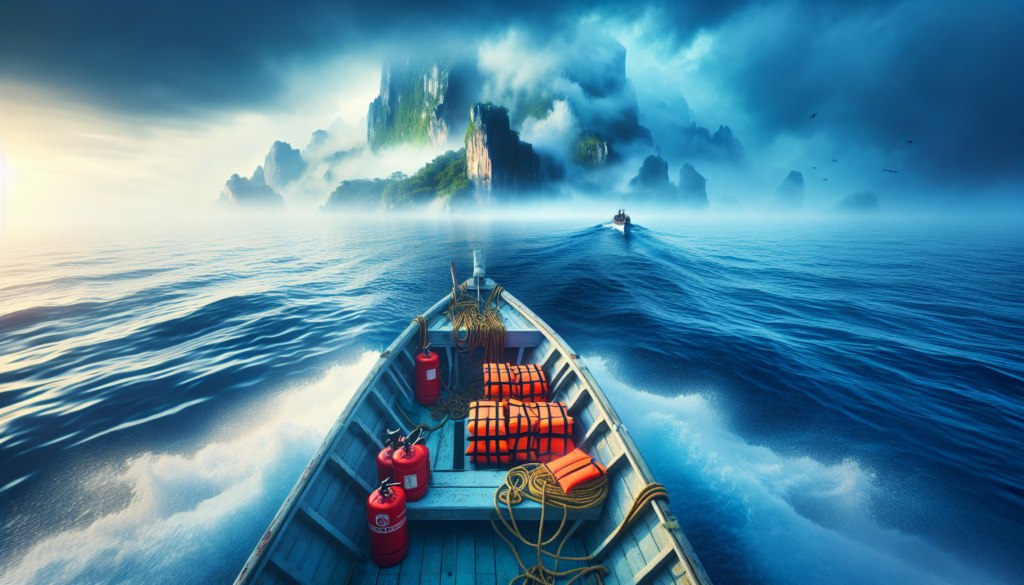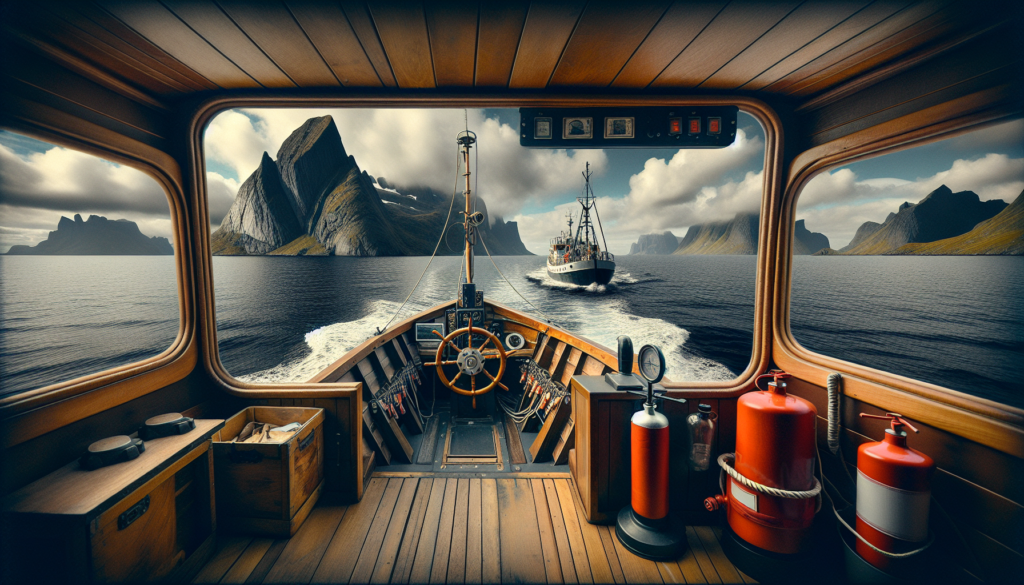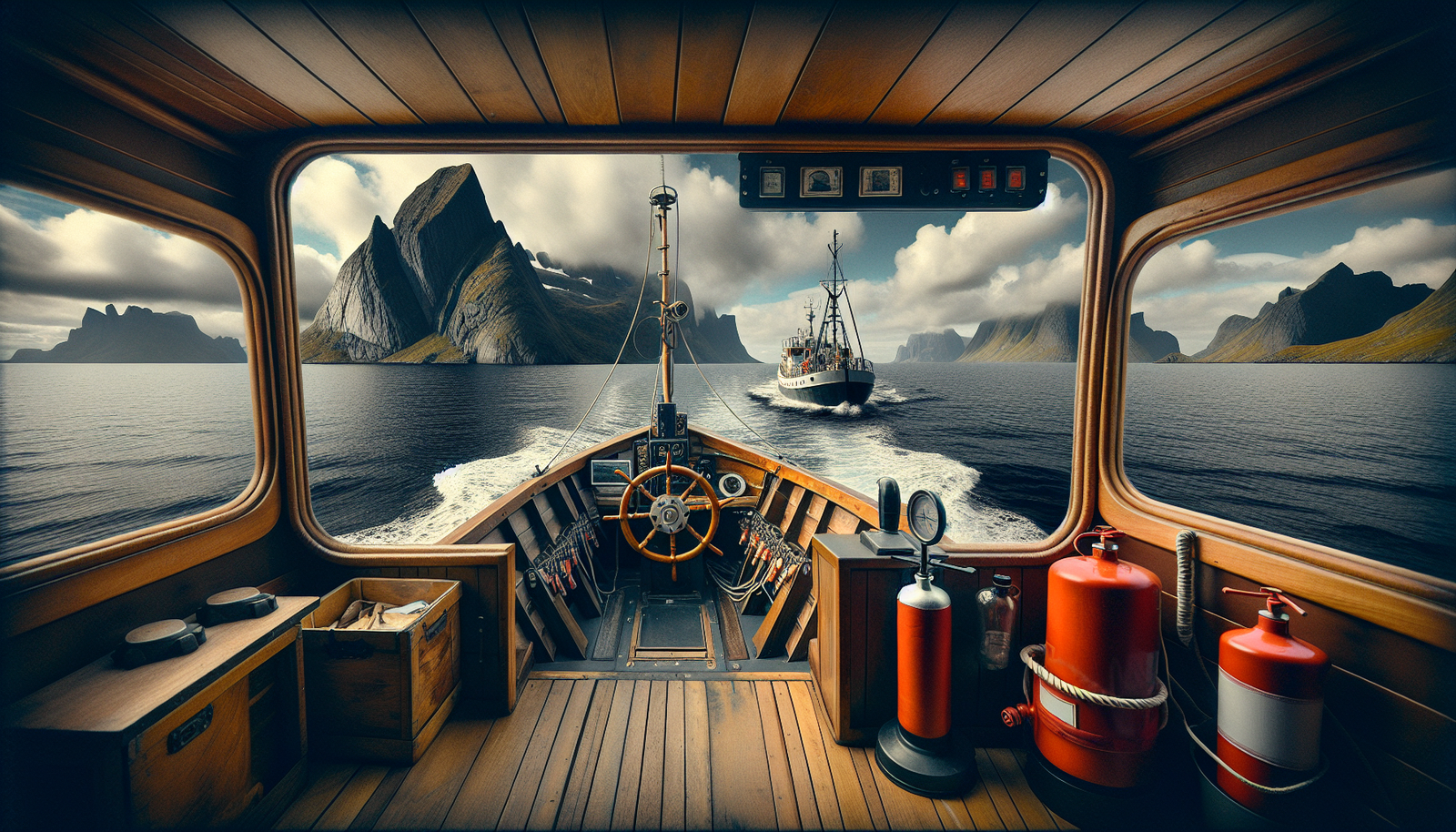As an adventurer, you eagerly anticipate the thrill of navigating towards a distant speck on the horizon, the promise of an unexplored island whispering secrets of mysteries and treasures yet uncovered. Your heart beats wildly at thoughts of discovering the reclusive charms hidden in the heart of the ocean. “Boating Safety Tips For Remote Island Explorations” wraps your adrenaline-fuelled desire for uncharted territories with the comforting blanket of safety guidelines needed to confidently tread these pristine waters and navigate treacherous terrains, ensuring your quests remain etched as exhilarating stories rather than unfortunate tales. Harness the power of this wisdom to transform your navigation experience from daunting to daring. Get ready to experience your wildest oceanic adventures, albeit, safely equipped.

Choosing the Right Vessel
Imagine that you stand on the cusp of a grand, seafaring adventure where wind meets water. But before you can embark on your journey of solitude and exploration, you need the right companion – in other words, your perfect boat.
Understanding different types of boats
While boats all share the common purpose of transportation on water, they vary in design, size, and functionality. From the humble dinghy to roaring speedboats, from the charming sailboat to the stately yacht, each icon of marine craftsmanship echoes a different melody of the sea. Understand what each one offers and let your needs and aspirations guide your choice.
Choosing a boat suitable for remote island explorations
A remote island expedition demands a vessel that thrives on unpredictability; one that can gracefully handle its dance with the waves. It should be sturdy, reliable, and equipped with the essential features for long journeys, such as a comprehensive navigation system, reliable communication tools, and ample space for provisions and equipment.
Appropriately sizing your boat
Just as Goldilocks found comfort in the “just right” option, so should you seek a boat of optimal size. Too small, and you risk underpreparedness for daunting sea conditions. Too large, and you may wrestle with navigational challenges and higher operations cost. Balance your needs with the boat’s size for a comfortable, cost-effective, and immersive experience.
Equipment Check
The key to an enjoyable boating adventure lies not just in the vessel itself, but also in your meticulously packed bag of essentials.
Essential equipment for boating
Start with key items like a compass, maps, adequate clothing, life vests, and provisions. Consider essential boat tools, spare parts, and manuals for your boat. Like a well-prepared scout, be ready for every situation.
Emergency equipment checklist
Your emergency kit should include first-aid resources, flares, a VHF radio for emergencies, and equipment for water purification. A well-stocked emergency kit can be the fine line that separates a challenging situation from a fatal one.
Regular maintenance checks
When it comes to an adventurous voyage, the devil lies in the health of your vessel’s engine, sails, fuel lines, and electrical systems. Regularly inspect your boat and conduct any necessary maintenance. In the middle of the roaring ocean, your boat is your stronghold, your haven.
Up-to-date navigation tools
Having the latest navigational tools such as GPS, chartplotter, depth finder can make a huge difference in uncharted territories. Remember, you’re not just navigating waters; you’re navigating your journey to treasured memories.
Understanding Weather and Navigational Charts
A fundamental and often overlooked aspect of successful boating lies in deciphering topographies not of land, but of water and air.
Understanding marine charts
A marine chart is a map that secures your adventure. Through it, you learn about underwater landscapes, hidden structures, nautical routes, and marked dangers. Learning to read one is as essential as bringing a compass.
Weather monitoring devices
Possessing boatside weather technology could mean the difference between setting sail under clear skies and inadvertently heading into a storm. Anemometers, barometers, and radar are essential tools for a safe voyage.
Interpreting weather patterns
A blue sky may seem inviting, but subtly shifting cloud formations, a sudden drop in temperature, or a change in wind direction could indicate otherwise. Learning to ‘read’ the weather is essential for remote island explorations.
Adjusting routes based on weather
Being flexible with your route depending on weather changes is key. A seemingly minor detour may very well grant you safer passage, more breath-taking views, and a story captivating enough to rival the very siren’s song.

Boating Safety Measures
You’re on an adventure, but not a reckless one. Striking the balance is key, and safety measures are the scales.
Boating regulations and laws
Knowing and respecting the marine laws and regulations of the area you traverse is fundamental. They exist not to stifle your adventure, but to ensure it proceeds smoothly and safely.
Safety instructions and precautions
Keep safety manuals, instructions, and guidelines near at hand. Above all, take every precaution seriously. Remember, even an experienced sailor respects the strength and volatility of the sea.
Lifejackets and onboard safety gears
Ensure everyone on board has a secure life jacket. Similarly, ensure that other safety gear like fire extinguishers and life rafts are in check.
Avoiding boating under influence
See through sober eyes. Boating Under The Influence can turn your dream adventure into a nightmare for yourself and others. Savor the pristine beauty of the unexplored islands with your senses uncloaked.
Dangers of Remote Boating
In the heart of the exhilarating unknown, danger may occasionally surface like an unpredictable wave.
Common hazards during remote island exploration
Hazards of remote boating can include inclement weather, difficult navigation, isolation, and lack of immediate rescue support.
Risk of getting lost when boating in remote areas
The thrill of uncharted waters can sometimes lead to disorientation. Hence, always keep your navigational tools handy and ensure they’re functioning correctly before you embark on your journey.
Mitigating dangers
Effectively mitigating dangers involves vigilance, correct decision making, physical preparedness, and respect for the sea.
Dealing with onboard emergencies
Remain calm in emergencies. Use onboard communication devices to signal for help. Make sure all onboard know the use of safety equipment. Modulate your instinctual adrenaline rush into useful action.
Preparation For Long Distance Boating
Great adventures are born out of great preparation.
Physical and mental preparation
Physically, ensure you’re healthy and fit before the trip. Mentally, let resiliency be your mantra. Embrace challenge with an open heart and a calm mind.
Sufficient fuel and provisions
Stock enough fuel and provisions for the journey. Take into consideration the unpredictability of weather and water conditions that may extend your travel time.
Checking suitable docking places
Research docking places en route. Whether they offer supplies, repairs, or just a picturesque view, they are essential rest stops in your sea-borne epic.
Boating Communication Equipment
In remote island explorations, remaining connected with civilization could be your saving grace.
Importance of reliable communication
Reliable communication links you with emergency support in dire situations. It also keeps you updated with weather forecasts and crucial information.
Different types of communication devices
Equip your vessel with a VHF marine radio, satellite devices, GPS, and EPIRB. Each device caters to different aspects of communication, from sharing your position to calling for SOS.
Using communication devices effectively
Training to use these devices efficiently aids in swift, clear communications, avoiding unnecessary complications or misunderstandings.
Emergency Protocols
Dealing with emergencies isn’t just about equipment and technology, but knowing the right steps to take.
Understanding safety protocols
Safety protocols are codes that detail specific actions under hazard scenarios. Learn them diligently, and they become your guiding beacon amidst chaos.
Being prepared for unexpected situations
Adapt to unforeseen circumstances. Build a survival kit, and familiarize yourself with the use of each item within.
Reacting to emergencies properly
The right reaction to an emergency can drastically change the consequences. Be calm, have a strategy, and trust your safety training.
Training and Experience
Your sense of adventure may be innate, but boating skills are honed over time.
Importance of boating experience
Experience breeds familiarity with the water, increasing your resilience, resourcefulness, and ability to take decisive action in challenging situations.
Getting formal training
Formal training in navigation, boat handling, safety procedures, and emergency protocol is invaluable. It elevates knowledge into wisdom, and chance into design.
Practising regular safety drills
Safety drilling ingrains emergency responses into muscle memory. Regularly repeating them prepares you to act promptly and accurately when they matter the most.
Caring for Your Environment
Your adventure should leave behind memories, not damage.
Respecting marine life
The marine ecosystem is a delicate balance of awe-inspiring diversity. Be a silent observer, not a disruptor; give marine life space and respect it deserves.
Proper waste management
Ensure your adventure doesn’t add to the marine litter. Dispose of waste responsibly. After all, the ocean is more than a destination; it’s a living entity to be revered and preserved.
Practices to prevent pollution
Opt for eco-conscious practices. Minimize usage of harsh detergents, and conserve water and energy.
Understanding and respecting local cultures during explorations
Island explorations might lead you to encounters with unique local cultures. Treat them with respect, learn from their knowledge and traditions, and remain open to their perspectives.
Your dalliance with the open waters and uncharted islands is a personal narrative; a blend of joy, thrill, discovery, and learning. It’s an adventure but one that comes with considerable responsibility. Equip yourself with the right tools, a respect for safety, understanding of risks, and a deep reverence for the environment you’re exploring. Your dream of boating towards remote islands awaits. Take the helm, prepare your vessel, and embark on this intrepid voyage. Every wave, every breeze is your story waiting to be written.

